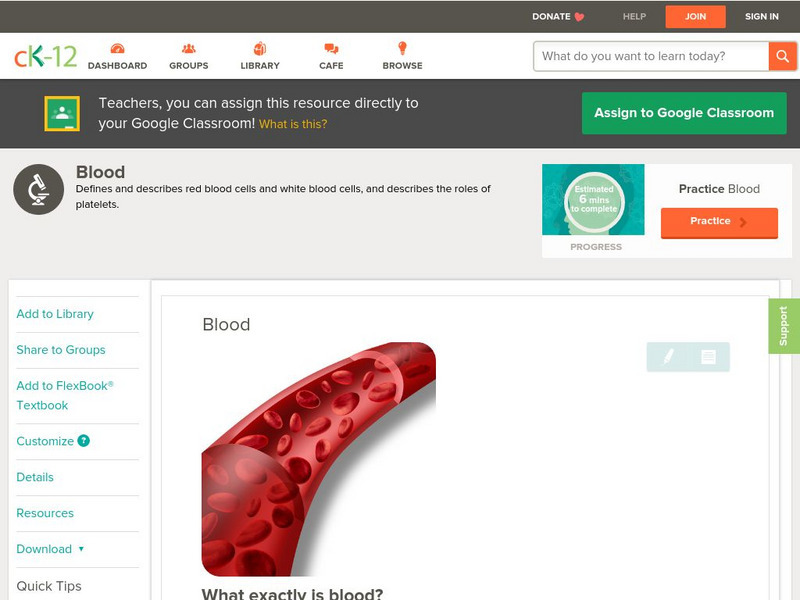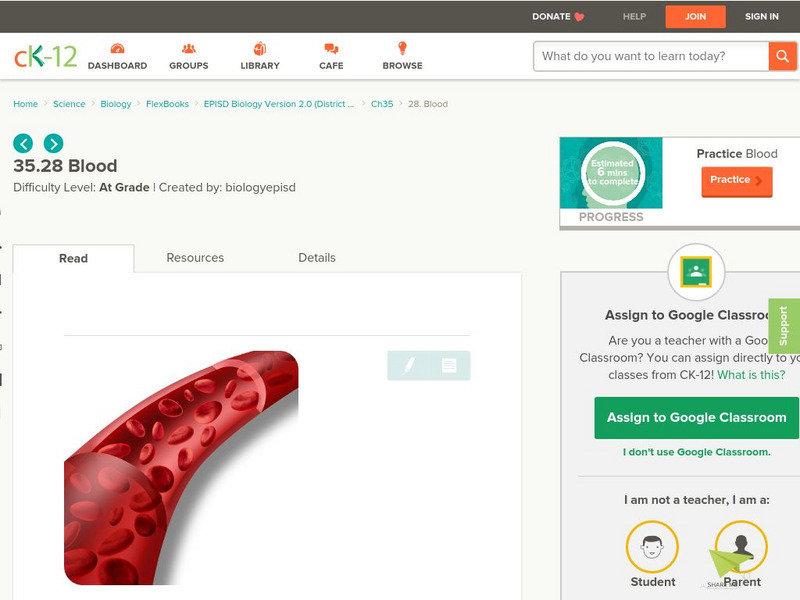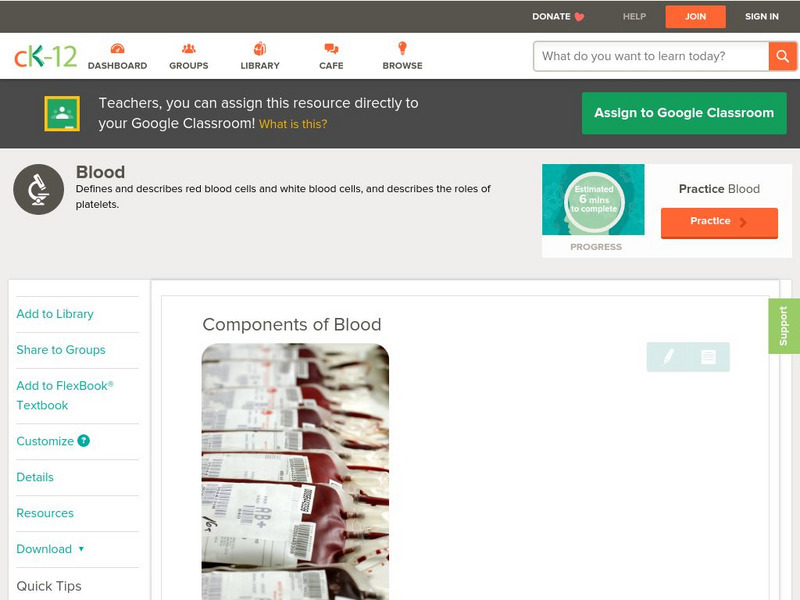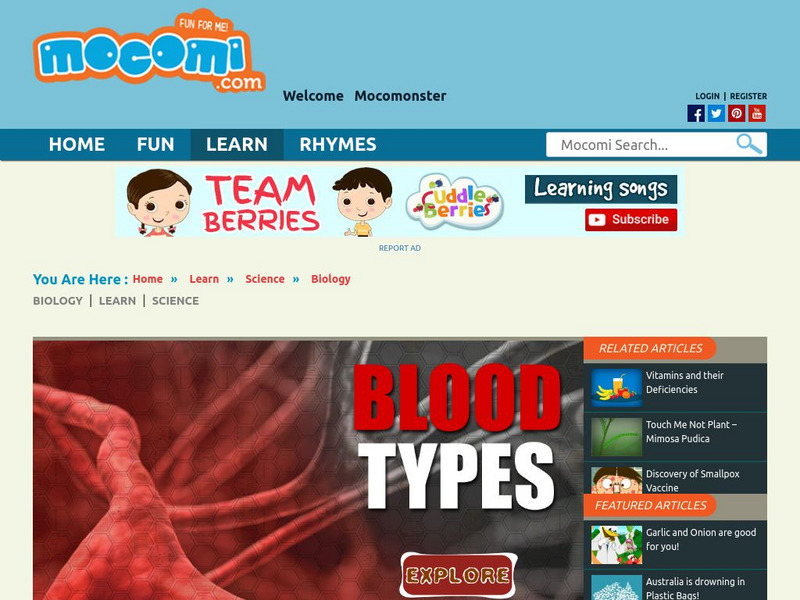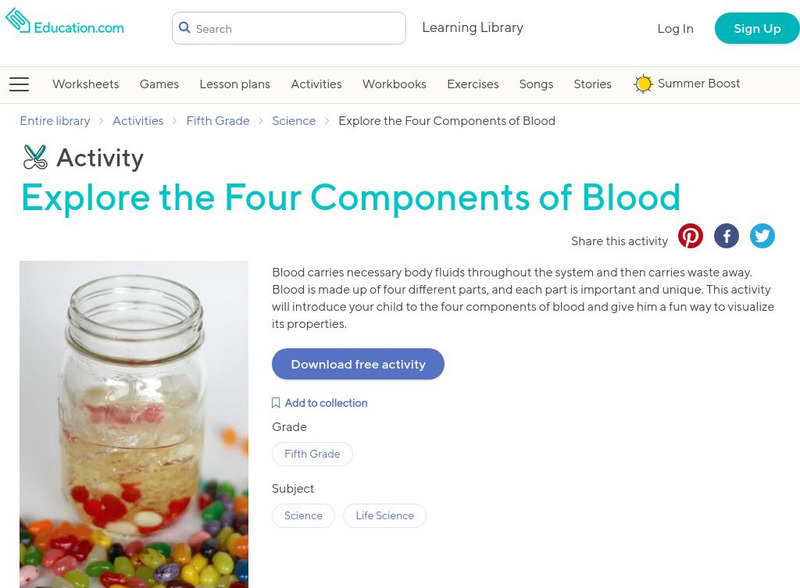Curated OER
Laboratory
In this chemistry worksheet, students identify and locate various vocabulary terms pertaining to items found in chemistry laboratory. There are 54 chemistry terms located in the word search.
Curated OER
Circulatory System Design
Students identify the different parts of the circulatory system and their function. They work together to create their own model of the system and use it to determine the rate of blood flow. They answer questions related to their model.
Curated OER
Regulation of Cell Division
Cell division and all the biological aspects of activation and chemical signals are detailed here. Cyclin, G phases, cell growth, and cancer checkpoint control systems are explained and the triggers listed. The slides are very clear and...
Curated OER
Regulation of Cell Division
Supplementing the review of mitosis and meiosis, the detailed slides give information about growth factors, cell communication, and regulator genes. A fascinating topic, your class will be inspired by the applications and developments of...
Curated OER
The Circulatory System
In this circulatory system worksheet, learners read a paragraph about the function of the different organs that make up the circulatory system. Then students complete 3 short answer questions.
Curated OER
Circulatory System
In this circulatory system worksheet, students use an internet program to observe the circulatory system and answer short answer questions about it. Students complete 21 short answer questions.
Curated OER
Quiz Questions - Cells
In this cells instructional activity, students read and choose the multiple choice answers to 20 questions involving cells, microscopes, and the life process of Growth.
Curated OER
Operating the spectrophotometer
Working in small groups, learners explore the operation of spectrophotometer. Using the spectrophotometer, they investigate Beer's Law with everyday items.
OpenStax
Open Stax: Anatomy & Physiology: Leukocytes and Platelets
This study of white blood cells includes informational reading material, illustrated diagrams, vocabulary, and self-checking review and application questions.
Palomar Community College District
Palomar College: Blood Components (Tutorial)
This review of what makes up human blood is easy to read and understand. There are guides to pronunciation and glossary links as well as a self quiz to check your understanding.
WebMD
Web Md: Complete Blood Count (Cbc)
This site from WebMD provides an extremely detailed description of a complete blood count, how it is taken, what it measures, and what the results tell you. Links to important terms within the text and a chart that shows average amounts...
OpenStax
Open Stax: Anatomy & Physiology: An Overview of Blood
Find out about the characteristics and components of blood with informational text, diagrams, examples, and review questuons.
CK-12 Foundation
Ck 12: Biology: Blood
[Free Registration/Login may be required to access all resource tools.] Defines and describes red blood cells and white blood cells, and describes the roles of platelets.
CK-12 Foundation
Ck 12: Blood
[Free Registration/Login may be required to access all resource tools.] In this interactive tutorial students will learn to explain how the heart pumps blood throughout the body. Students will explain the composition of blood and will...
Mayo Clinic
Mayo Clinic: High Platelet Count
Resource provides great information on Thrombocythemia, or high platelet count. The article is set up as a brief answer to a question about the condition, thrombocythemia. The information is short, factual and interesting.
CK-12 Foundation
Ck 12: Life Science: Components of Blood
[Free Registration/Login may be required to access all resource tools.] Did you know that blood is a tissue? Blood is a fluid connective tissue that is made up of red blood cells, white blood cells, platelets, and plasma. Learn more...
Other
Fun Science Gallery: Let's Observe the Red Blood Cells
A brief overview of red blood cells accompanies a blood smear observation experiment. Includes drawings and photographs to aid in understanding.
Mocomi & Anibrain Digital Technologies
Mocomi: Blood Types
Understand how blood functions within the body and how it is broken down into various blood types.
Wisc-Online
Wisc Online: Learning Activity: Red Blood Cells
Fun site that teaches users about what red blood cells are and what they do. Provides users with interactive pictures of terms mentioned.
CK-12 Foundation
Ck 12: Life Science: 11.26 Blood
Understand the physiological make-up of human blood.
Other
American Red Cross: White Blood Cells
Site provides users with a brief description of what white blood cells are and what they do. Contains links to plasma, platelets, red blood cells as well as types of blood cells.
Education.com
Education.com: Make Plasma Soup and Explore the Components of Blood
[Free Registration/Login Required] Allow students to visualize blood and its components by making this plasma soup. Discuss plasma, red blood cells, white blood cells, and platelets with this model of blood.
Other
Dr. Hull: Parents' Common Sense Encyclopedia: Cbc, Complete Blood Count
Chart giving the normal ranges in a complete blood count or CBC. Looks at white blood cells, hemoglobin, hematocrit, red blood cells, platelets, and average red cell size. Click on highlighted terms for more information about them.
Treehut
Suzy's World: Blood
Use this site to find out why your body needs blood with this quick fact sheet. You can also try an experiment with your pulse.
Other popular searches
- Low Blood Platelets
- High Blood Platelets
- Normal Blood Platelets
- Blood Platelets Lupus
- Blood Platelets Pt














